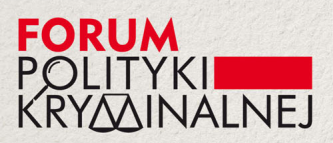Relationships at a school as a factor in suicidal decisions among children
DOI:
https://doi.org/10.31261/FPK.2021.02.03Keywords:
children, suicides, school, juvenile law, criminal lawAbstract
The article describes the social and legal aspects of school relations, focusing on the actions influencing the increasing number of suicides among children. At the outset, the authors depicted the international, constitutional and statutory regulations considering the principals’ and teachers’ duties in ensuring students’ safety. Afterwards, some of the research about bullying in schools has been described. The next part is focused on a juvenile, criminal and disciplinary responsibility of the mentioned persons. In the final part, the authors depicted solutions which could stave off the featured problem and propose de lege ferenda postulates. The conclusions highlight the multidimensionality of the childrens’ suicides’ problem.
References
Berguno G. et al., Children’s Experience of Loneliness at School and its Relation to Bullying and the Quality of Teacher Interventions, “The Qualitative Report” 2004, vol. 9, no. 3, s. 483–499.
Czarne statystyki. Coraz więcej prób samobójczych, https://serwisy.gazetaprawna.pl/edukacja/artykuly/1414773,samobojstwa-w-szkole-mlodziez-nie-chce-zyc.html [dostęp: 24.03.2021].
Czekaj M., Ingerencja prokuratora w sprawach o przestępstwa prywatnoskargowe, „Prokuratura i Prawo” 1999, nr 7–8, s. 46–64.
Grzelak S., Żyro D., Jak wspierać uczniów po roku epidemii? Wyzwania i rekomendacje dla wychowania, profilaktyki i zdrowia psychicznego, [b.w.], Warszawa 2021.
Hawton K. et al., Clustering of Suicides in Children and Adolescents, “The Lancet Child & Adolescent Health” 2020, no. 1, s. 58–67.
Hołyst B., Suicydologia, LexisNexis, Warszawa 2002.
Kielan A., Cieślak I., Suicydologiczny aspekt ciąż nieletnich, „Suicydologia” 2016, nr 1, s. 67–74.
Kochanowska K., Jak radzić sobie z bullyingiem i dyskryminacją w szkole?, Grupa KK, Radom 2016.
Kodeks karny. Komentarz, red. A. Grześkowiak, KPP Monografie, Warszawa 2021.
Kołodziejek M., Depresja u dzieci i młodzieży: podstawy teoretyczne, psychoterapia poznawczo-behawioralna, „Psychoterapia” 2008, nr 2, s. 17–31.
Krajewska A., Bullying jako forma przemocy w środowisku szkolnym, w: Przestępczość nieletnich – teoria i praktyka, red. S. Ćmiel, Wydawnictwo Wyższej Szkoły Gospodarki Euroregionalnej im. Alcide De Gasperi, Józefów 2012, s. 259–274.
Mencel P., Problem społeczny zamachów samobójczych wśród dzieci i młodzieży, w: Problemy nauk społecznych, humanistycznych, ekonomicznych. Konteksty i wyzwania, red. K. Pujer, Exante, Wrocław 2017, s. 49–58.
Napieralska E., Epidemiologia zgonów dzieci i młodzieży z powodu samobójstw w Polsce w latach 1999–2006, „Problemy Higieny i Epidemiologii” 2010, nr 91, s. 92–98.
Ostaszewski K., Myśli samobójcze a sytuacja rodzinna oraz problemy inter- i eksternalizacyjne u młodzieży w wieku 14–16 lat, „Dziecko Krzywdzone. Teoria, badania, praktyka” 2018, vol. 17, no. 3, s. 42–62.
Palma J., Problemy samobójstw a rozwiązania systemowe, „Suicydologia” 2016, nr 1, s. 27–34.
Pawełko A., Problemy samobójstw wśród polskich dzieci, „Małopolskie Pielęgniarki i Położne” 2019, nr 39, s. 12–14.
Szymańska J., Zapobieganie samobójstwom dzieci i młodzieży. Poradnik dla pracowników szkół i placówek oraz rodziców, Ośrodek Rozwoju Eukacji, Warszawa 2016.
Uczniowie siedzą od rana do wieczora w szkole. Ośmiolatki nie mają czasu na zabawę, https://parenting.pl/uczniowie-siedza-od-rana-do-wieczora-w-szkole-osmiolatkinie-maja-czasu-na-zabawe [dostęp: 27.03.2021].
Urbanek A., Zachowania samobójcze młodzieży w kontekście trudności adaptacyjnych, „Szkoła Specjalna” 2019, nr 5, s. 325–339.
Węgrzynowska J., Dzieci doświadczające przemocy rówieśniczej, „Dziecko Krzywdzone. Teoria, badania, praktyka” 2016, vol. 15, no. 1, s. 9–26.
Wyrok SN – Izba Karna z dnia 3 czerwca 2004 r., sygn. akt: V KK 13/04, Legalis.
Downloads
Published
How to Cite
Issue
Section
License
The Copyright Owners of the submitted texts grant the Reader the right to use the pdf documents under the provisions of the Creative Commons 4.0 International License: Attribution-Share-Alike (CC BY SA). The user can copy and redistribute the material in any medium or format and remix, transform, and build upon the material for any purpose.
1. License
The University of Silesia Press provides immediate open access to journal’s content under the Creative Commons BY-SA 4.0 license (http://creativecommons.org/licenses/by-sa/4.0/). Authors who publish with this journal retain all copyrights and agree to the terms of the above-mentioned CC BY-SA 4.0 license.
2. Author’s Warranties
The author warrants that the article is original, written by stated author/s, has not been published before, contains no unlawful statements, does not infringe the rights of others, is subject to copyright that is vested exclusively in the author and free of any third party rights, and that any necessary written permissions to quote from other sources have been obtained by the author/s.
If the article contains illustrative material (drawings, photos, graphs, maps), the author declares that the said works are of his authorship, they do not infringe the rights of the third party (including personal rights, i.a. the authorization to reproduce physical likeness) and the author holds exclusive proprietary copyrights. The author publishes the above works as part of the article under the licence "Creative Commons Attribution-ShareAlike 4.0 International".
ATTENTION! When the legal situation of the illustrative material has not been determined and the necessary consent has not been granted by the proprietary copyrights holders, the submitted material will not be accepted for editorial process. At the same time the author takes full responsibility for providing false data (this also regards covering the costs incurred by the University of Silesia Press and financial claims of the third party).
3. User Rights
Under the CC BY-SA 4.0 license, the users are free to share (copy, distribute and transmit the contribution) and adapt (remix, transform, and build upon the material) the article for any purpose, provided they attribute the contribution in the manner specified by the author or licensor.
4. Co-Authorship
If the article was prepared jointly with other authors, the signatory of this form warrants that he/she has been authorized by all co-authors to sign this agreement on their behalf, and agrees to inform his/her co-authors of the terms of this agreement.
I hereby declare that in the event of withdrawal of the text from the publishing process or submitting it to another publisher without agreement from the editorial office, I agree to cover all costs incurred by the University of Silesia in connection with my application.


